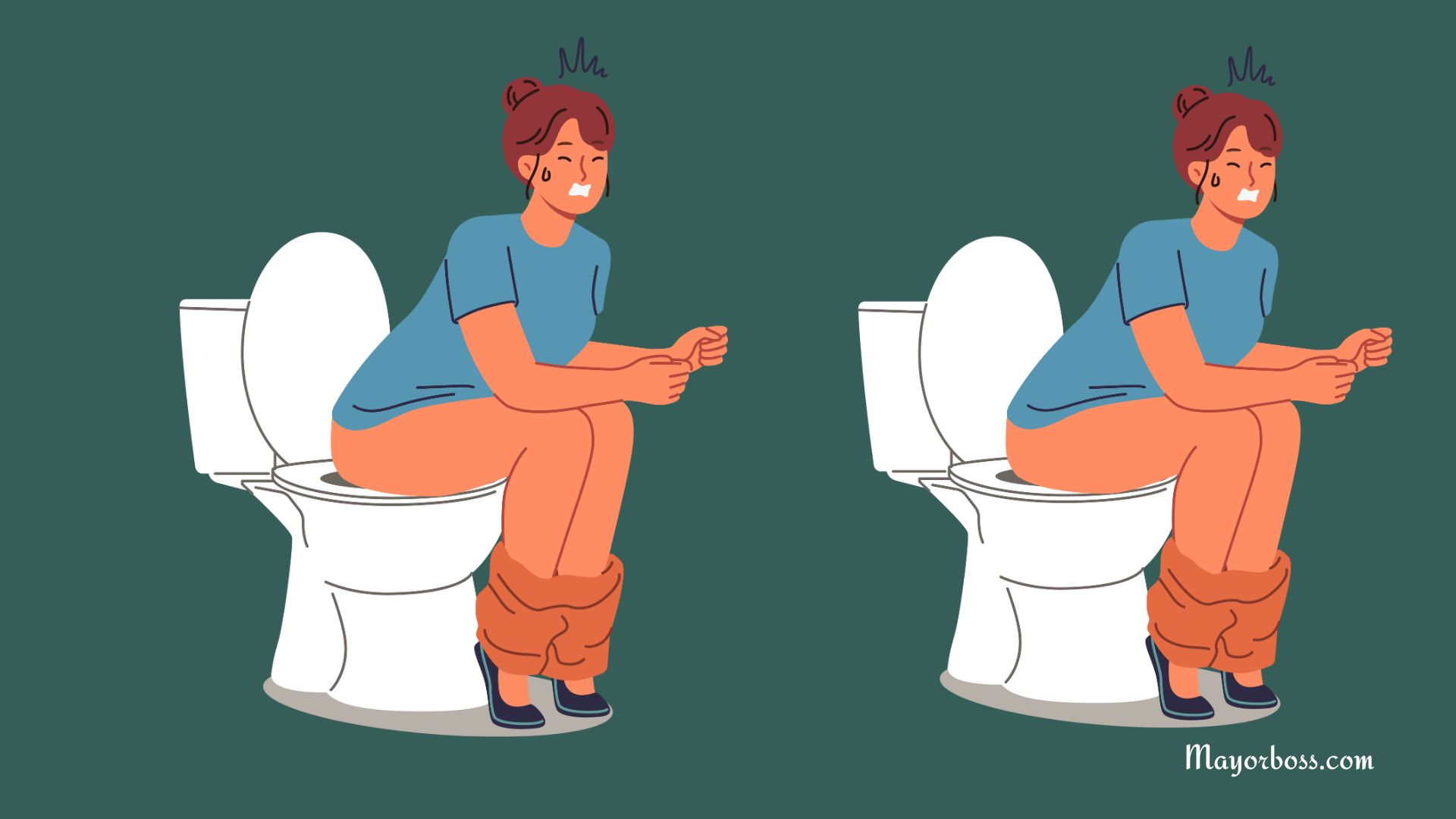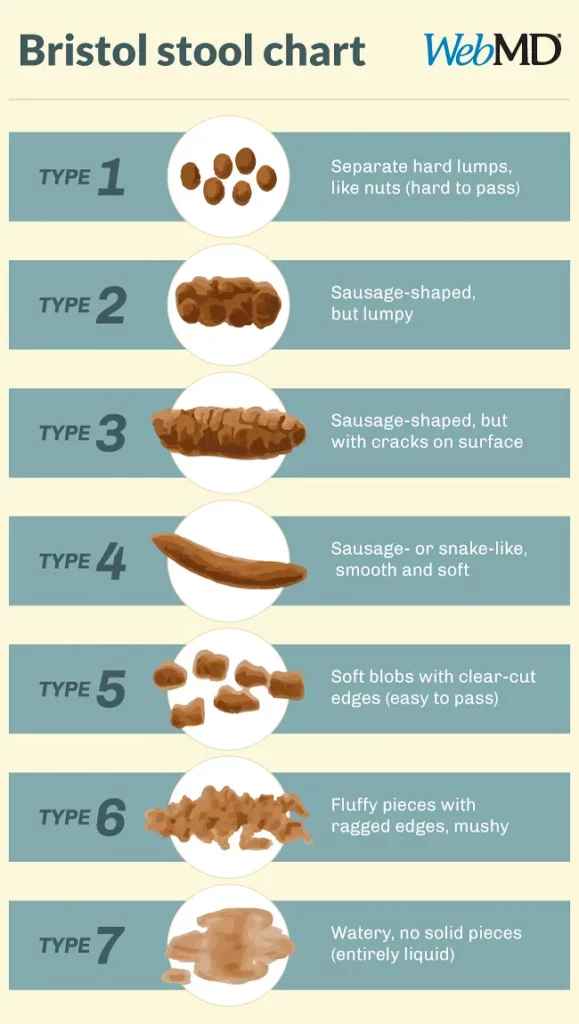What the Shape of Your Poop Can Tell You About Your Health
The shape of your poop can reveal important clues about your health. It might sound strange, but paying attention to what you see in the toilet can provide valuable insight into what’s happening inside your body. In this article, we’ll discuss different poop shapes, what they mean, and how they can serve as clues to your overall health.

If Your Poop Looks Like Small Hard Lumps, It Could Mean Constipation
If your stool comes out in small, hard lumps, similar to rabbit droppings, it’s likely a sign of constipation. Constipation means that your stool has spent too much time in your colon, causing it to become dry and hard. This kind of poop can be painful to pass and often results from a lack of fiber in your diet, dehydration, or a sedentary lifestyle. Basically, when you’re not drinking enough water or getting enough dietary fiber, your stool becomes less soft and harder to pass.
Ways to Help Relieve Constipation
To get things moving again, increase your intake of high-fiber foods like fruits, vegetables, and whole grains. Also, drinking plenty of water and staying active can help keep things flowing smoothly through your digestive system. For some people, fiber supplements may also help—but it’s a good idea to check with your doctor before starting any new supplements.
If Your Poop Is Smooth and Sausage-Shaped, That’s a Good Sign
The ideal poop shape is smooth, soft, and sausage-like. This shape indicates proper hydration and fiber balance in the diet. This is often referred to as the “gold standard” of bowel movements. According to the Bristol Stool Chart, a visual guide used by doctors to classify stool types, this type of poop indicates that everything is working well within your digestive system. If your poop looks like this, it means that you’re probably eating a balanced diet and drinking enough fluids to keep your body hydrated.

Photo by WebMd
What to Continue Doing to Maintain Ideal Stool Shape
To maintain this healthy shape, continue eating a balanced diet rich in fruits, vegetables, and whole grains. Drinking water and staying active is also key. Consistency is essential when it comes to keeping your bowels in top shape.
If Your Poop Comes Out in Soft Blobs, You May Be Eating Too Much Fiber
Soft blobs with clear-cut edges are still considered normal, but they may be a sign that you’re eating a lot of fiber. Fiber is crucial for maintaining regular bowel movements, but too much can lead to overly soft stools. If you’ve recently increased your fiber intake or added more fiber-rich foods to your diet, you may notice that your stools become a bit softer.
What to Do If Your Stool Is Too Soft
If your stool is consistently on the softer side and you’re not experiencing discomfort, there’s probably nothing to worry about. However, if it’s bothersome, try scaling back on high-fiber foods like beans, oats, and certain vegetables. Make sure to drink enough water so the fiber you eat is working correctly in your digestive system.
If Your Poop Is Loose and Watery, It Could Be Diarrhea
Watery or loose stools, commonly known as diarrhea, can be a sign of several issues. Diarrhea is usually caused by an infection, such as a stomach virus, food poisoning, stress, or a reaction to certain medications. Sometimes, it can also be due to food intolerances or sensitivities, such as lactose intolerance.
How to Deal with Diarrhea
To manage diarrhea, focus on staying hydrated since your body loses a lot of water through loose stools. Drink clear fluids like water, broth, or electrolyte solutions to replace lost fluids. Avoid caffeine, alcohol, and sugary drinks, as these can worsen dehydration. If diarrhea lasts for more than a couple of days or is accompanied by severe symptoms like abdominal pain or blood in the stool, see your doctor.
If Your Poop Is Thin and Pencil-Like, You Should Speak to Your Doctor
Thin, pencil-shaped poop can indicate that something is constricting your colon, possibly a growth or inflammation. Although it could be caused by something as simple as constipation, persistent thin stools could also signal something more serious, like a blockage or even colorectal cancer. It’s best to contact your doctor if you notice your poop regularly looks like this.
When to Be Concerned About Thin Stools
If this type of poop is a one-time occurrence, it might just be temporary. However, if you consistently notice pencil-thin stools, it’s crucial to consult with your physician to rule out anything serious.
If Your Poop Floats, It May Contain Too Much Fat
Floating poop can indicate that there’s too much fat in your stool. This condition, known as steatorrhea, may suggest that your body is not absorbing fat properly. This could be due to a digestive issue, such as malabsorption or a problem with your pancreas. If you consistently notice floating stools, it’s worth discussing with your doctor.
What to Do If Your Poop Floats
Floating stool every now and then is usually not a big deal, but frequent occurrences could indicate an underlying issue that needs to be addressed. It’s best to speak with your healthcare provider to determine the cause.
If Your Poop Is Dark or Tarry, It Might Indicate Bleeding
Dark, tarry stools are often a sign of bleeding in the upper gastrointestinal tract, which includes the esophagus, stomach, and the first part of the small intestine. The black color is due to blood that has been digested as it moves through the intestines. This is a serious sign and should not be ignored. If you notice dark or tarry stools, promptly contact your doctor.
When to Seek Medical Attention
Dark stools can sometimes be caused by something less concerning, such as taking iron supplements or eating certain foods like black licorice or blueberries. However, if the stool looks tarry or you’re unsure of the cause, it’s best to see your doctor to be safe.
If Your Poop Is Light or Clay-Colored, It Could Mean a Bile Duct Issue
A poop that is pale, gray, or clay-colored may indicate a problem with your bile ducts or liver. Bile gives stool its brown color, so a lack of bile may suggest that there’s an issue preventing its flow, such as a bile duct obstruction. Issues with the liver, gallbladder, or pancreas can also cause this kind of discoloration.
If you notice pale or clay-colored stool, it’s important to see your doctor. It could be a sign of a more serious issue that requires medical evaluation.
The Bottom Line
Your poop can be an important indicator of your health. By paying attention to the shape, color, and consistency of your stool, you can learn a lot about what’s happening inside your body. While not every change means something serious is wrong, being aware of what’s normal for you can help you recognize when something is off. If you notice any persistent changes or have concerns, don’t hesitate to consult your physician.
